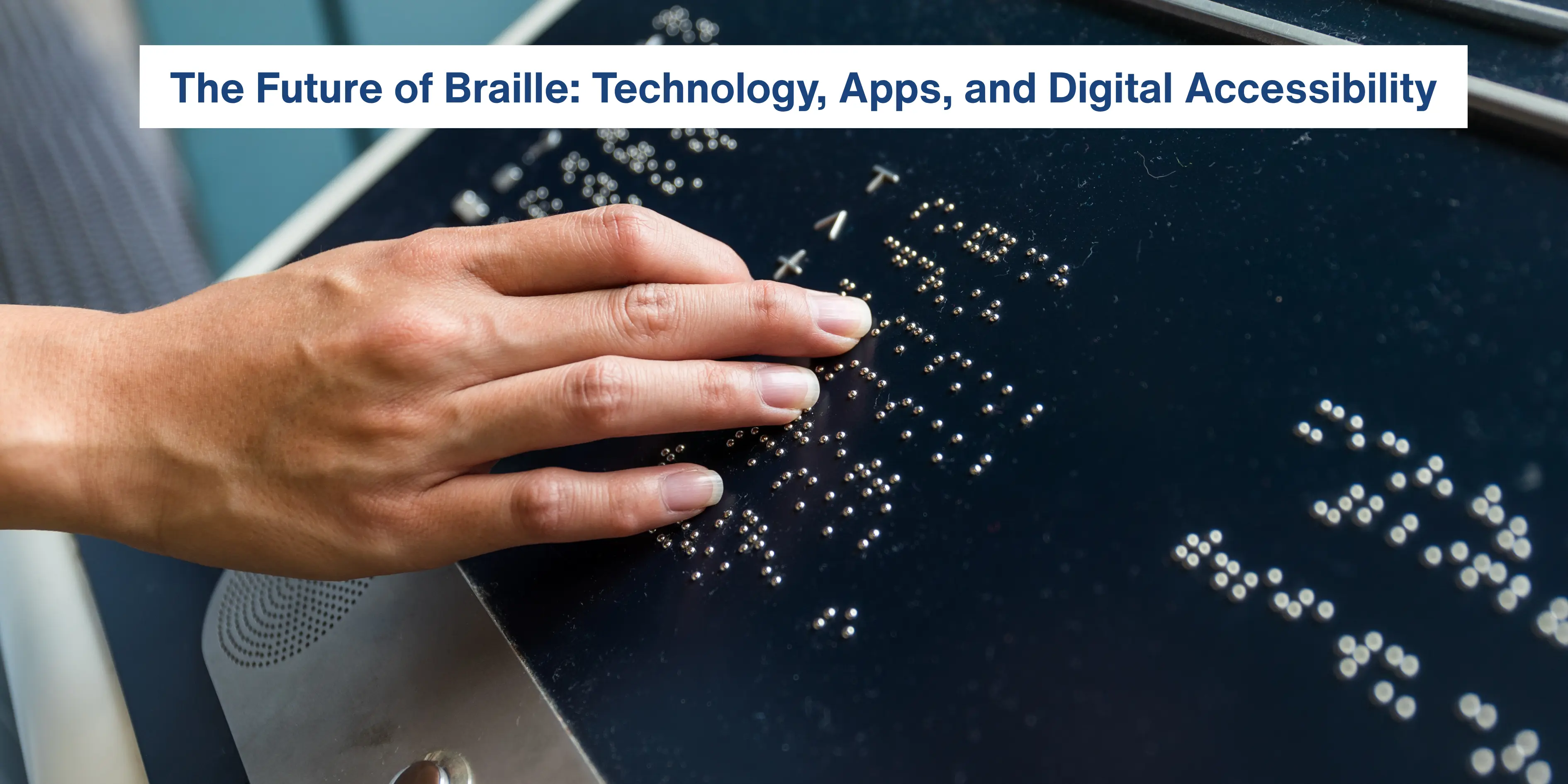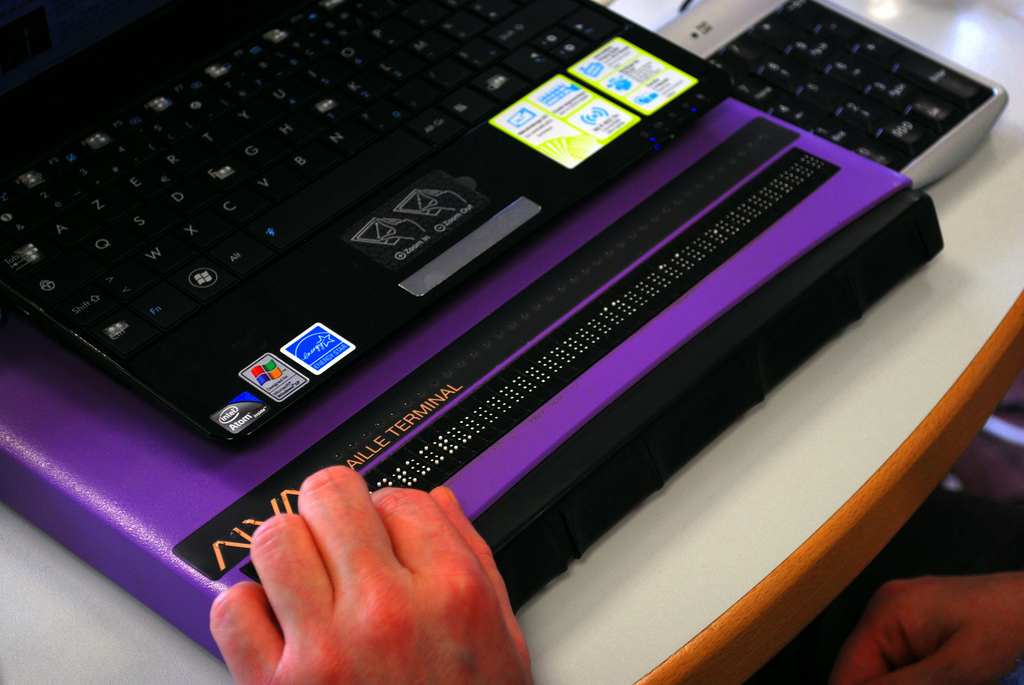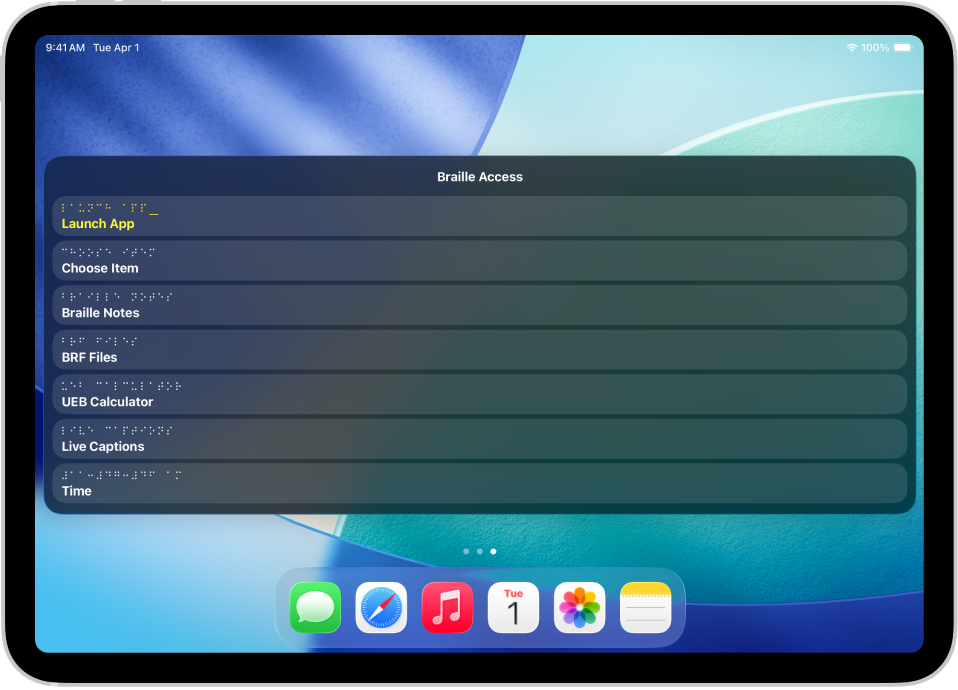The Future of Braille: Technology, Apps, and Digital Accessibility

Every year on 4th January, the world observes World Braille Day, a day dedicated to celebrating the power of Braille in enabling literacy, independence, and inclusion for people who are blind or visually impaired.
While Louis Braille first developed the tactile reading and writing system in the 19th century, its impact continues to evolve in the digital era. Today, Braille technology is transforming accessibility, bridging the gap between the physical and digital worlds for millions of visually impaired people (VIPs).
In this blog, we explore how Braille is entering its next chapter through innovation, apps, and inclusive design, and how together, we can make the world more accessible for everyone.
Why World Braille Day Matters
World Braille Day marks the birth anniversary of Louis Braille, the inventor of the six-dot system that opened the world of reading and writing to people with vision loss.
Recognised by the United Nations in 2018, the day reminds us that access to information is a basic human right, yet remains out of reach for many VIPs around the world. According to the Royal National Institute of Blind People (RNIB), fewer than 10% of visually impaired people in the UK use Braille today, often due to limited availability of resources, training, or technology.
But that’s changing, and fast.
The Rise of Digital Braille
Braille’s digital transformation began with refreshable Braille displays, devices that connect to computers or smartphones and use small mechanical pins to form Braille characters that rise and fall dynamically.

Popular Devices Shaping the Future:
- Orbit Reader 20 & 40: Affordable, portable Braille e-readers helping users access digital content worldwide.
- Braille Sense 6: A modern Android-based Braille note taker combining word processing, web browsing, and email.
- Mountbatten Brailler (Learn more): A hybrid tool bridging traditional Braille writing with electronic embossing, widely used in UK schools.
These technologies are making Braille more portable, affordable, and connected than ever before, and that’s essential in today’s digital-first world.
Apps and Software Expanding Braille Literacy

While tactile devices are central, apps and software now support Braille learning and accessibility in creative new ways:
- Braille Tutor & Braille Academy – teach Braille alphabet and contractions interactively.
- BRLTTY – open-source screen reader supporting refreshable Braille displays across platforms.
- Dolphin EasyReader – developed in the UK- gives VIPs access to thousands of audiobooks and Braille-ready files.
Together, these innovations make Braille learning accessible at home, in classrooms, and on the go, helping a new generation of VIPs stay digitally literate.
Braille and Digital Inclusion in the UK

As London becomes more inclusive, technology and urban design are increasingly aligned with accessibility goals. Public services, transport networks, and educational institutions are integrating Braille signage and digital Braille compatibility across environments.
At Travel Hands, we see firsthand how digital accessibility complements mobility and independence. Our mission connects VIPs with volunteers in London, empowering them to travel safely and confidently across the city.
While we focus on safe navigation, we also celebrate how Braille literacy, accessible technology, and inclusive volunteering work together to promote equal opportunity for VIPs.
The Future: AI, Smart Devices, and Universal Access
Tactile tablets like the Dot Pad are enabling VIPs to access maps, graphs, and images in Braille format.
- AI-powered translation tools are converting digital text into Braille instantly.
- Voice and Braille hybrid devices are combining touch and sound to improve comprehension.
The ultimate goal? A world where Braille is fully integrated into the digital ecosystem, ensuring equal access to education, work, and communication for every visually impaired person.
How You Can Support Braille and Accessibility
As we celebrate World Braille Day, here’s how individuals and organisations can make a difference:
- Learn about inclusive innovation through global initiatives like the Accessible Books Consortium.
- Advocate for Braille-inclusive digital design.
- Partner with charities like Travel Hands to support inclusive mobility and accessibility projects.
- Volunteer your time or skills, and help make London truly accessible for everyone.
From raised dots on paper to dynamic Braille displays on screens, Braille continues to evolve as a symbol of independence and equality.
This World Braille Day, let’s celebrate not just the invention of Braille, but its future.
Because when technology, empathy, and accessibility work together, everyone moves forward.
Learn more about Travel Hands or sign up to volunteer in London and be part of a movement that’s turning movement into good.
Be a part of

